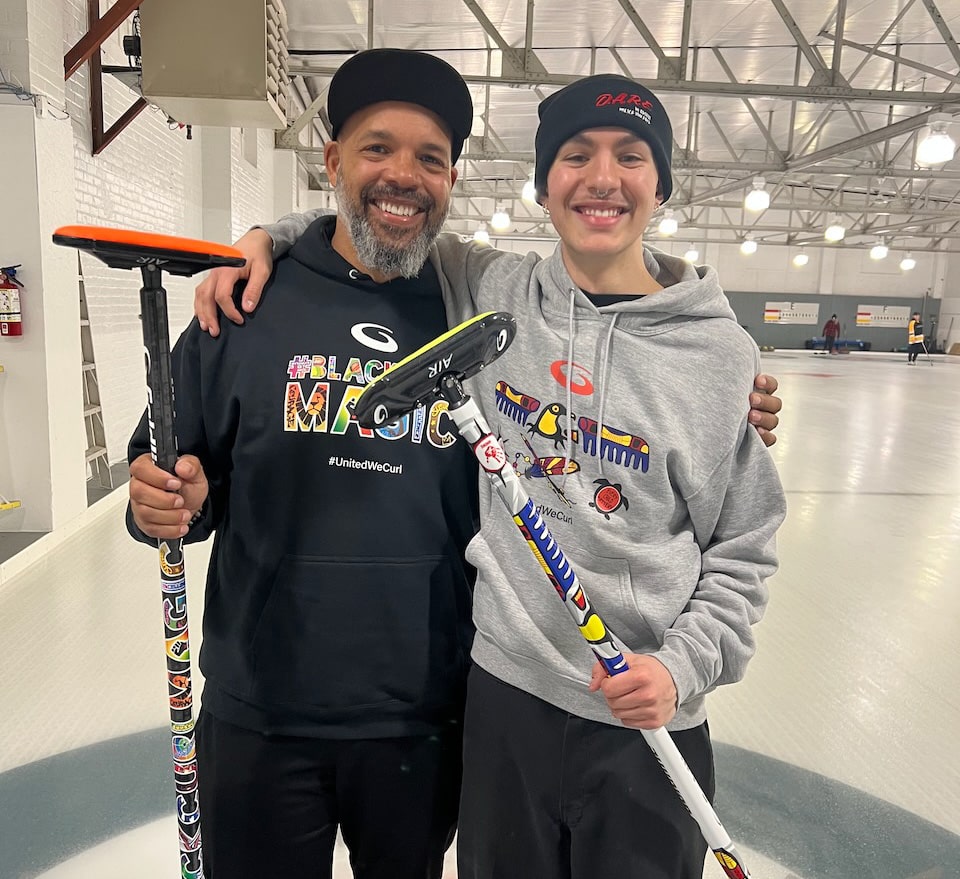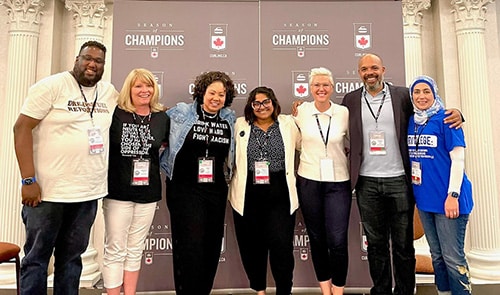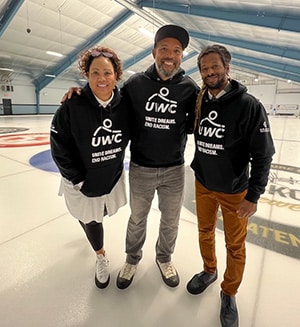Discussing the Future of Curling

Dr. Richard Norman discusses new role and the direction of curling
Recently, Curling Canada welcomed Dr. Richard Norman onto their team as Director of Community Futures and Innovations. If you’re unclear about what that title implies, that’s all right.
With a slight laugh, Richard will be the first to admit that it’s not the most self-explanatory of monikers. In simple terms, Richard’s goals are to look at all levels of curling and help create functional strategies to bring about constructive and impactful changes to curling at the community level, developing connections and generating action to bring curling forward towards its goals of inclusion.
Sport has long been a part of Richard’s life, playing varsity soccer and the like. When he got into tennis a little later in life and began playing tournaments at “old school” clubs that still enforced traditional rules, such as “tennis whites,” he began to think about sports traditions and the barriers they can create. This eventually led him to pursue a master’s degree in Strategic Foresight and Innovation, where he looked at the future of tennis in Canada.
He continued his research, critically looking at social issues in sports, completing his dissertation in 2020 focusing on the intersection of race, colonialism, and sport. In particular, he was concerned with the barriers they create for non-traditional people to participate. This trajectory culminated in the first of its-kind Diversity and Inclusion Curling Symposium held in May 2022, co-hosted by Dr. Heather Mair (former advisor) and Dr. Simon Barrick.

It was through this symposium where they had some very frank discussions. Richard deepened his relationship with Curling Canada’s then-CEO Katherine Henderson and others connected to curling. It eventually led him to take on his current role. Realizing that to have the most impact, you need to jump in and start taking action within the space, he’s excited to get involved in the inner workings of Curling Canada and have the ability to help affect the change they are looking for.
To Richard, the truth is that none of this is an issue unique to curling. All sports are at risk if they do not take proper action. Discussing broad ideas with no concrete action or data will have little to no genuine results. The path forward is to locate what systems need to be deconstructed and rebuilt into structures that are more equitable, safer, and designed to be fully inclusive.
One of the first projects that Richard has taken on in his new role is creating a comprehensive illustration of what the curling system looks like in Canada, detailing a clear representation of the factors, stakeholders, and influences affecting curling centres today. This project aims to create a baseline that can then be used as a reference on which steps need to be taken to generate that desired forward movement.
Another project that Richard leads, called Bridging Boundaries, focuses on ‘how we make authentic connections with communities not represented in curling?’ With Bridging Boundaries, Curling Canada has paired with grassroots clubs to examine the specific demographic and community dynamics. With assistance from Visionnaire (a consultancy specializing in outreach to diverse communities), the project is designed to help curling centres assess what steps might be the most appropriate to attract non-traditional curlers to the sport and how Curling Canada can help them maximize any opportunities.
Richard believes that one of the biggest contributions Curling Canada can have moving forward is finding ways to best support grassroots organizations in creating the relationships they need to ensure healthy participation in their facilities. If a more open and welcoming community is curling’s goal, then curling needs to make connections and support those communities. Most of the work needs to happen outside the club, and connect with local groups where they are, such as the Sikh temple or Mosque across the street, the Indigenous cultural centre or 2SLGBTQIA+ social leagues and start the connection there. He mentions, “The most crucial piece of this is to ask racialized or marginalized groups how we (as the curling community) can help them; it’s not ‘just’ about curling.”
It’s an important distinction to move forward together and not about going to spaces and telling them what curling can do for them, but rather listening, asking and learning what curling and curlers can do to support their needs. Curling Canada is committed to helping facilitate these connections and support curling centres; however, it needs to open up these types of opportunities.
Another significant focus for Richard is to help Curling Canada achieve greater transparency related to what is happening inside the organization. One of the best ways to communicate this is through storytelling. He believes that Curling Canada needs to tell the stories of things happening internally and in the wider community regarding diversity, equity, and inclusion. It is not a question of being perfect or having it all complete, but acknowledging the steps that are being taken today. It is about being clear about the motivations and communication of what is happening that will lead to more ability to connect with communities around issues of inclusion in the future. Large-scale structural change doesn’t happen all at once, and it is important to celebrate the steps along the way.
Richard acknowledges there is a misconception regarding tradition, rules and regulations within sport in that they are not fixed and change far more often than people realize. When it comes to curling and their future, it’s a question of what we consider integral to the sport and what might be altered. While tradition may be comforting to some, it can impose a barrier for others, especially those who don’t see themselves in the sport from a historical standpoint. Shifting perspectives to view symbols and cultures differently helps to interrogate what is “truly essential to maintain in the sport.” While they might be cherished in many cases, simple adjustments can create new pathways for others to feel they belong.
When Richard thinks back to his first experiences with curling, it’s in the experience afterwards, reflecting to realizing that “I’m sitting with high-performance athletes… having a drink and talking, building new relationships with the top curlers in the world.” That is unique to curling and rooted at the heart of the sport, the social connection and understated nature of even those at the top. It is something special and is a vital part of how the sport can appeal to others and grow.
The question curling faces is “What’s the future for the sport, and are we ready to take the steps to make this sport truly inclusive?”.





